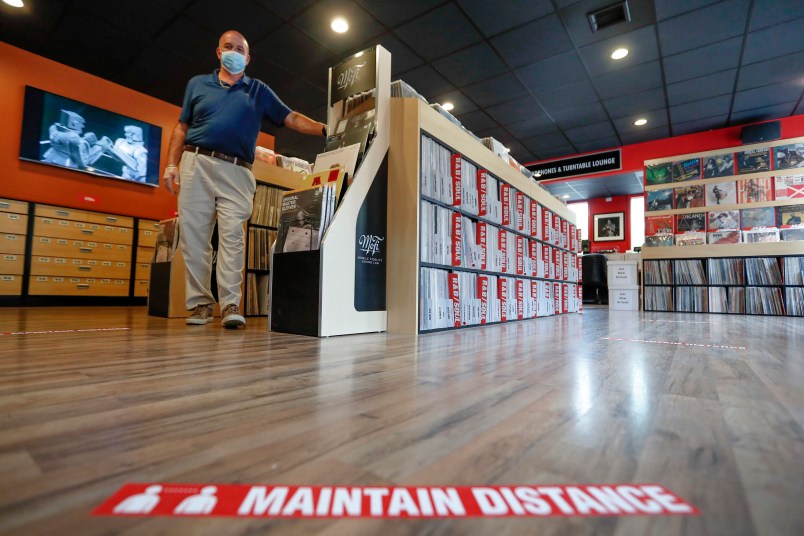If you’re trying to make sense of the ‘re-opening’ debate, here’s one resource that is worth looking at: Google’s COVID-19 Mobility Reports. This is just a slice of the oceans of data Google has at its corporate fingertips. Mainly it’s from geo-tracking data tied to your cellphones. In another conversation we can discuss the pros and cons of Google having access to this data and access to it as its own property. For now, it’s a valuable and fascinating resource for government officials and public health planners because it uses anonymized cellphone tracking data to produce very reliable and granular data on social and economic activity. As I said, Google has always had this and related data and it’s one of their core business assets. But they’ve made an edition of it available for the COVID19 Crisis.
If you click the link above, you can see regularly updated reports for most countries and for all US states. There are reports for Retail & Recreation, Grocery & Pharmacy, Parks, Transit Stations, Workplaces and Residential.
As of May 9th in California, Retail & Recreation remains stable and quite low at -46% of the baseline; Grocery and Pharmacy has been trending up and is now up 4% from the baseline. Parks are trending up but still down 23% from the baseline. Transit numbers have trended up slightly but are still down 40%.
Many of Georgia’s numbers weren’t quite as different as you’d expect from the political conversation. The big difference is the Retail and Recreation number which was only down 17%. Again, that’s relative to California being down 46%. On that same measure Illinois was down 32%; Massachusetts down 45%; Missouri down 20%; New Jersey down 50%; New York down 53%; Washington State down 34%.
We’re talking a lot about Georgia. It’s at 17%. But it’s notable that neighboring South Carolina is only down 15%. Their Grocery and Pharmacy mobility is actually up 17%.
One thing the Google explainer makes clear and rightly so is that you can really only make good comparisons between similar kinds of places. Mobility in a city just isn’t the same as in a rural or exurban area. Zipping around alone in your car is very different from using public transportation.
Much of the information is just interesting. If you’re a real data nerd you can download CSV’s of the data to slice it and dice it and maybe align it with public health data.
There’s obviously a lot this kind of data cannot capture. I’m not sure how sensitive it is to whether you go to a restaurant and get curbside pick up versus go in and eat. It doesn’t tell you how people are practicing hand hygiene or wearing masks. But it tells you quite a lot. And it tells it in a way that is measurable and thus significantly actionable for public officials and public health authorities.
The biggest takeaway for me, as I alluded to this morning, is that we shouldn’t assume that what public authorities allow or even encourage is actually what’s happening on the ground. Though collective action is critical, how this all unfolds is mainly tied to how safe people feel or don’t feel.







